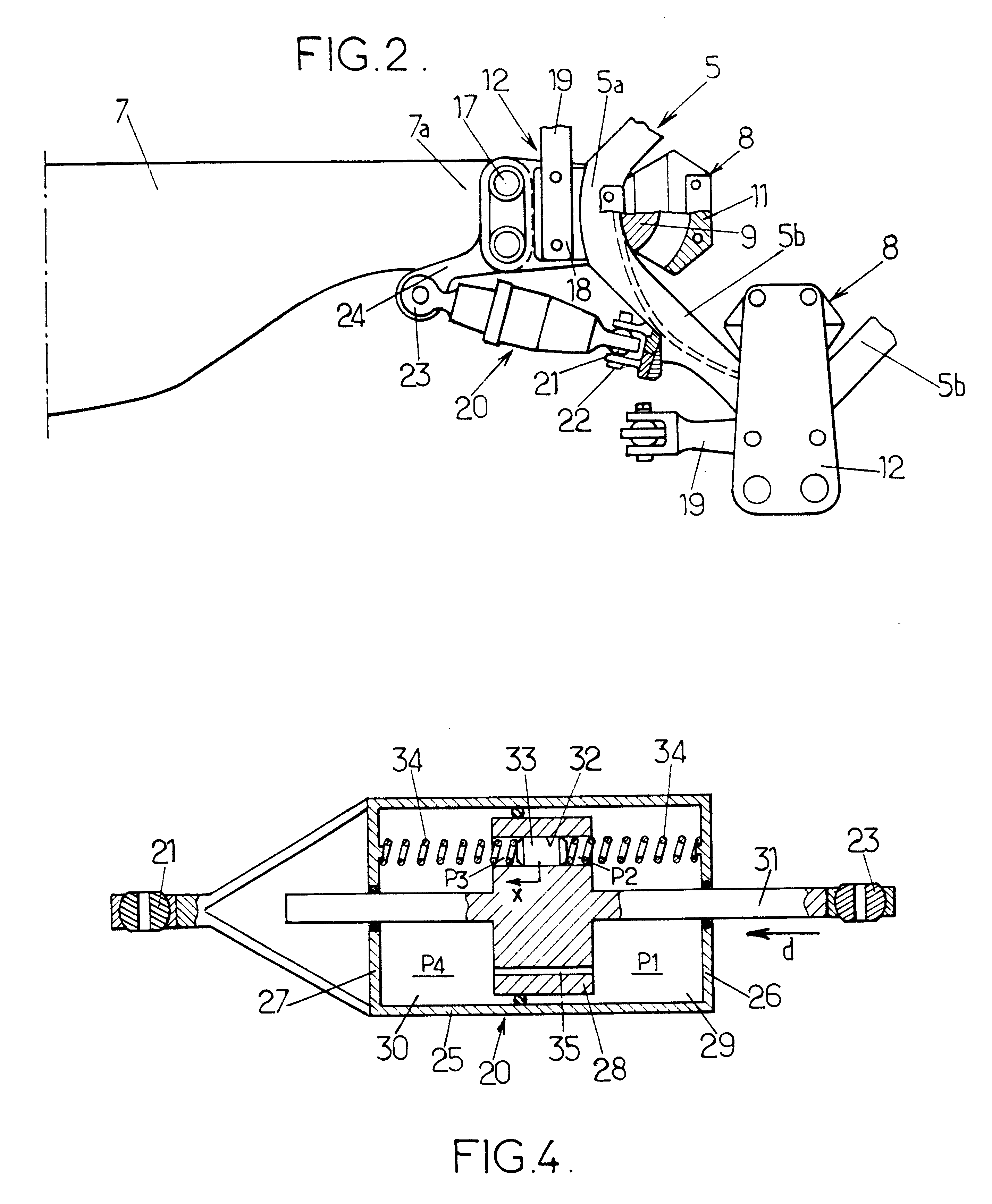Dual piston drag damper for rotary-wing aircraft rotor
a technology of rotary-wing aircraft and dampers, which is applied in the direction of propellers, propulsive elements, water-acting propulsive elements, etc., can solve the problems of high vibration and stress levels in the fuselage, rare phenomena, and waste of weigh
- Summary
- Abstract
- Description
- Claims
- Application Information
AI Technical Summary
Benefits of technology
Problems solved by technology
Method used
Image
Examples
Embodiment Construction
FIGS. 1 and 2 show schematically the head of a four-bladed helicopter main rotor substantially as described in EP 0 213 016 with reference to FIGS. 4 and 5 of that document, to which reference may advantageously be made for further details.
It will be recalled that this rotor head comprises a one-piece tubular mast-hub 1, the lower substantially cylindrical part of which forms a mast 2 with a base 4 designed to be connected in rotation to a main gearbox of the helicopter H (shown schematically in phantom outline) to drive the rotor in rotation about the axis A of the mast-hub 1. The latter also comprises an upper part forming a hub 3, which is an extension of the mast 2 and has the general external shape substantially of a truncated cone hollowed out at the end opposite to the mast 2 as far as a reinforcement ring 5 which constitutes the upper free end, thickened locally on its periphery, of the hub 3. Radial (relative to axis A) openings 6, identical and equal in number to the numbe...
PUM
 Login to View More
Login to View More Abstract
Description
Claims
Application Information
 Login to View More
Login to View More - R&D
- Intellectual Property
- Life Sciences
- Materials
- Tech Scout
- Unparalleled Data Quality
- Higher Quality Content
- 60% Fewer Hallucinations
Browse by: Latest US Patents, China's latest patents, Technical Efficacy Thesaurus, Application Domain, Technology Topic, Popular Technical Reports.
© 2025 PatSnap. All rights reserved.Legal|Privacy policy|Modern Slavery Act Transparency Statement|Sitemap|About US| Contact US: help@patsnap.com



